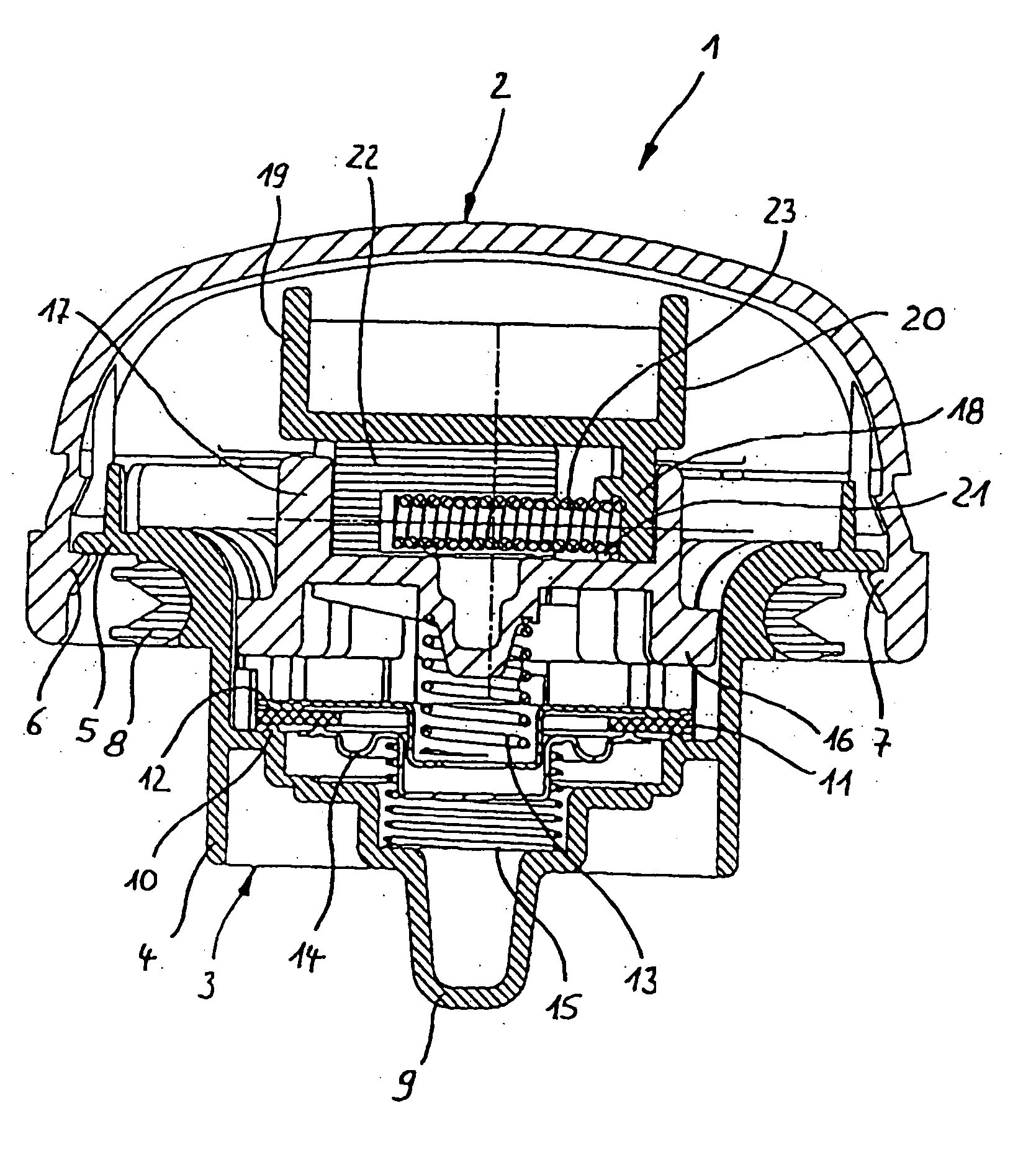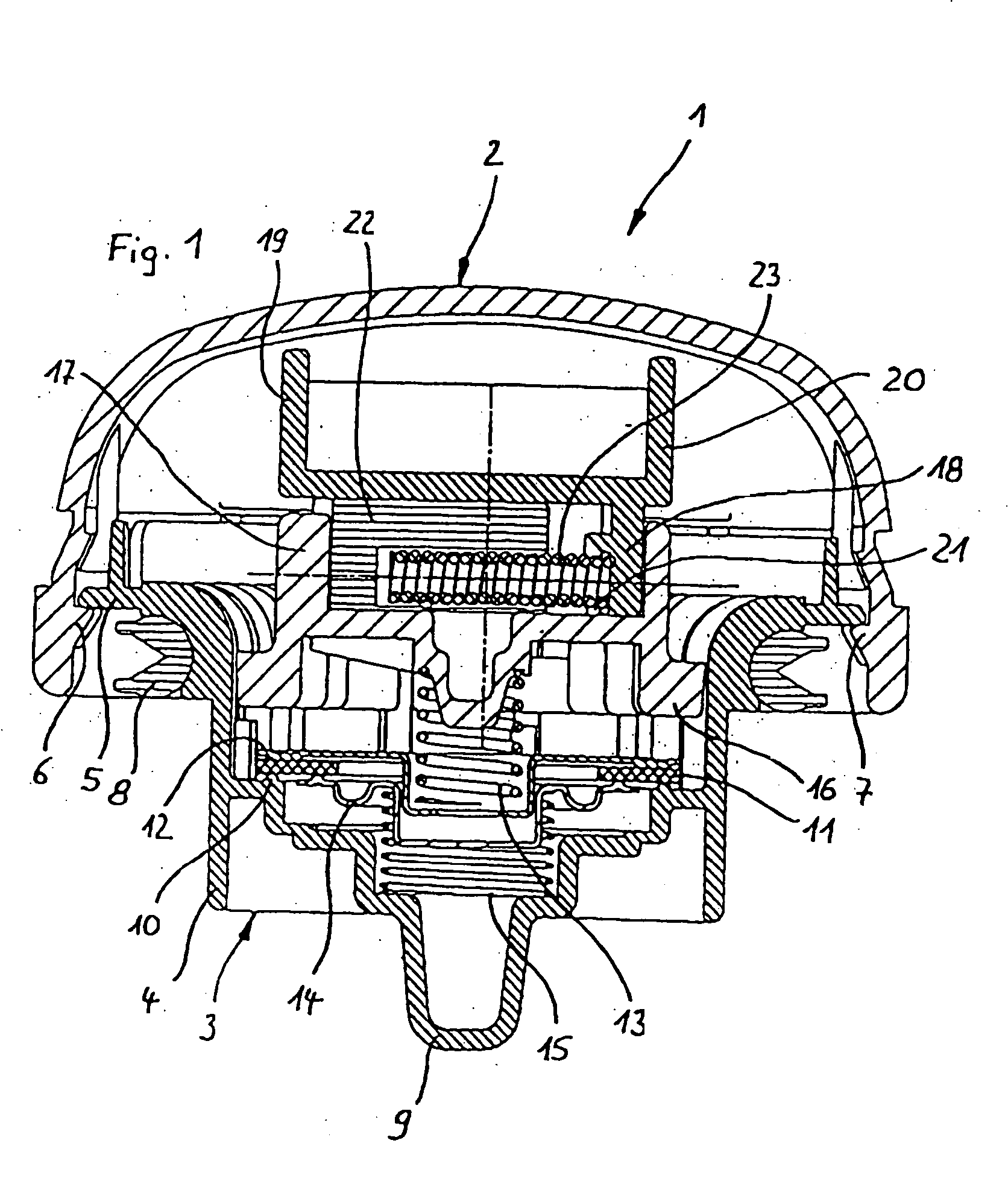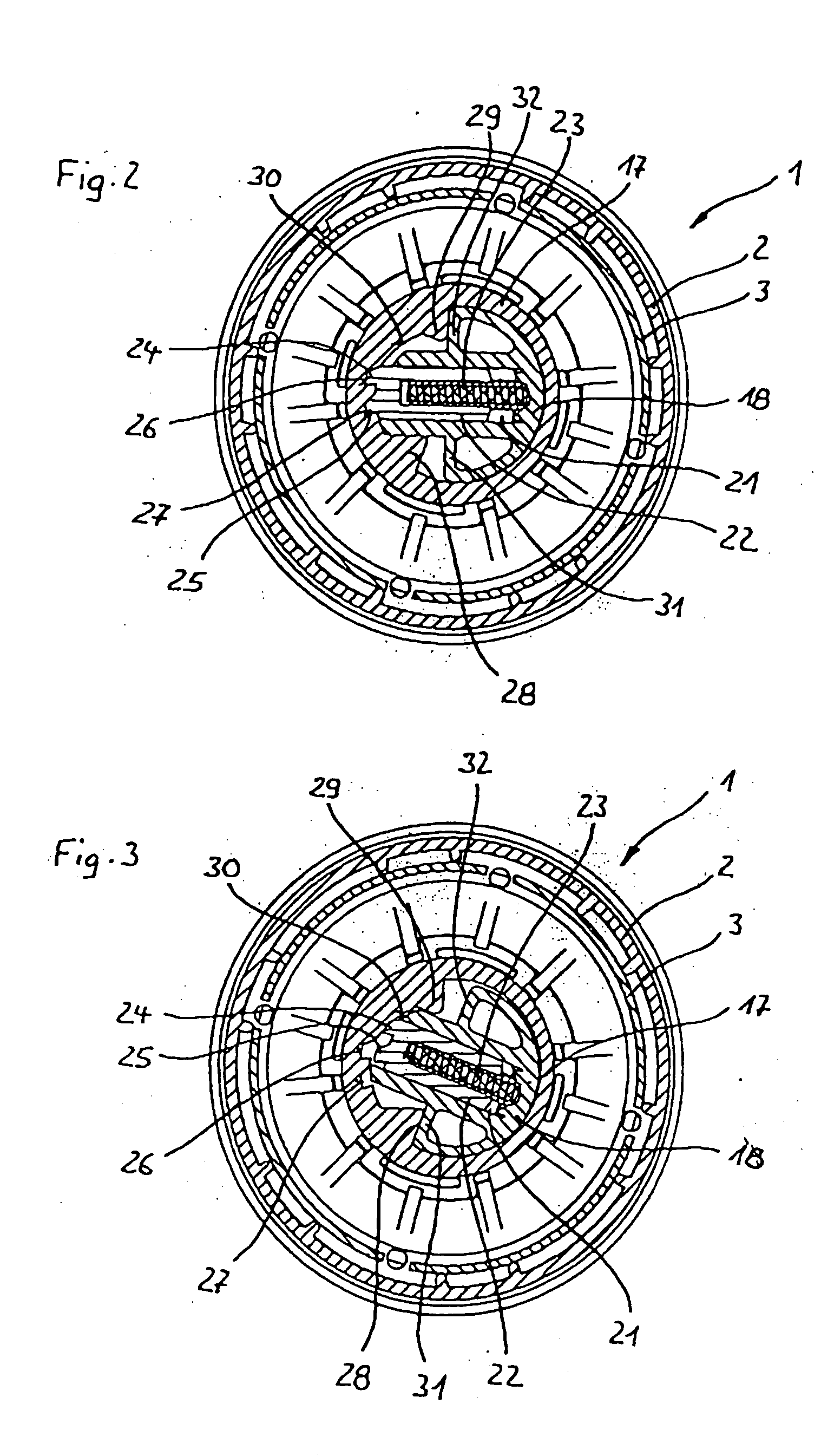Cap, in particular tank cap
a technology of cap and tank, applied in the field of caps, can solve the problems of affecting the function affecting the use of receptacles, and affecting the operation of overpressure and negative pressure valves, and achieves the effect of simple design and reliable feel
- Summary
- Abstract
- Description
- Claims
- Application Information
AI Technical Summary
Benefits of technology
Problems solved by technology
Method used
Image
Examples
Embodiment Construction
)
[0019] Tank cap 1 depicted in the Figures has a hat-shaped handle part 2 whose external shape is such that a flange projecting upward, at which tank cap 1 can be gripped, is formed. Handle part 2 is slipped over an engagement part 3 that comprises an engagement segment 4. Engagement segment 4 is provided on the outer side with engagement elements (not depicted here in detail), e.g. a thread, with which tank cap 1 can be brought into engagement with a corresponding thread in a tank neck. Engagement segment 4 transitions upward into a collar 5, horizontally bent over radially outward, beneath which handle part 2 is fitted by means of snap projections 6, 7. A sealing ring 8 surrounds the transition between engagement segment 4 and collar 5, and provides sealing with respect to the neck.
[0020] Engagement segment 4 comprises internally a support shell 9 that constitutes a valve seat ring 10. Support shell 9 has openings (not depicted here in detail) through which a connection is made t...
PUM
 Login to View More
Login to View More Abstract
Description
Claims
Application Information
 Login to View More
Login to View More - R&D
- Intellectual Property
- Life Sciences
- Materials
- Tech Scout
- Unparalleled Data Quality
- Higher Quality Content
- 60% Fewer Hallucinations
Browse by: Latest US Patents, China's latest patents, Technical Efficacy Thesaurus, Application Domain, Technology Topic, Popular Technical Reports.
© 2025 PatSnap. All rights reserved.Legal|Privacy policy|Modern Slavery Act Transparency Statement|Sitemap|About US| Contact US: help@patsnap.com



